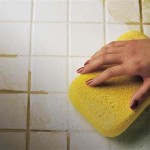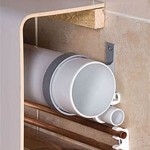Bathroom Sink Trap Assembly: Essential Aspects
A bathroom sink trap assembly is an essential component that ensures proper drainage and prevents unpleasant odors from escaping into the bathroom. Understanding the various aspects of a trap assembly will help you maintain and troubleshoot any issues effectively.
Components of a Trap Assembly
A typical bathroom sink trap assembly consists of several key components:
- P-Trap: The main part of the assembly, shaped like the letter "P," which connects the sink drain to the drainpipe.
- Bell (or Outlet): The widened bottom of the P-trap that collects wastewater and directs it towards the drainpipe.
- Slip Nut: A nut that allows the trap to be connected to the sink drain.
- Washer: A rubber or plastic seal that ensures a watertight connection between the trap and the sink drain.
- Locknut: A nut that secures the bell to the P-trap.
Materials
Bathroom sink trap assemblies are typically made from the following materials:
- PVC (Polyvinyl Chloride): Lightweight, corrosion-resistant, and widely used for residential plumbing.
- ABS (Acrylonitrile Butadiene Styrene): Stronger than PVC, but less resistant to heat and chemicals.
- Brass: Durable, corrosion-proof, and often used in higher-end fixtures.
- Chrome-plated brass: Similar to brass, with a protective chrome finish to enhance aesthetics.
Size and Configuration
Sink trap assemblies come in various sizes to accommodate different sink drain openings. The most common sizes are 1-1/4 inches and 1-1/2 inches. They are also available in different configurations, such as S-traps, U-traps, and bottle traps, depending on the space available and the specific plumbing requirements.
Installation and Maintenance
Installing a bathroom sink trap assembly is a relatively straightforward task that can be completed by most DIY enthusiasts. However, it's always best to consult a professional plumber if you encounter any difficulties. Proper maintenance involves regularly cleaning the assembly to remove any debris or buildup that can cause clogs and unpleasant odors.
Troubleshooting
If you encounter problems with your bathroom sink trap assembly, here are a few common issues and their potential solutions:
- Leakage: Check for loose connections, damaged washers, or cracks in the trap. Tighten connections, replace washers, or install a new trap as needed.
- Clogging: Remove the trap and clean out any debris that may be obstructing the flow of water. Use a drain cleaner or snake to clear stubborn clogs.
- Unpleasant odors: Pour baking soda or white vinegar down the drain to neutralize odors. If the issue persists, consider replacing the trap or calling a plumber to investigate further.
Conclusion
Understanding the essential aspects of a bathroom sink trap assembly empowers you to maintain and troubleshoot any issues effectively. By following proper installation and maintenance procedures, you can ensure a smoothly functioning drainage system and a fresh, odor-free bathroom environment.

Bathroom Sink Plumbing Installation Diy Montreal

Bathroom Sink Plumbing Installation Diy Montreal

20 Bathroom Sink Drain Parts How They Works Stopper Plumbing

How To Install The P Trap Under A Sink Dummies

How To Fix Or Replace A Leaky Sink Trap Hometips Drain Repair Replacing Kitchen

Replace A Trap And Add Cleanout Fine Homebuilding

How To Install P Trap And Bathroom Sink Drain Piping Easy Installation For Beginners
How To Install Bathroom Sink Drain Queen Bee Of Honey Dos

Pop Up Lift Turn Pull Out Stopper Bathroom Sink Drains

Bianchina Swapping Out A Bathroom Sink Drain And Pop Up







